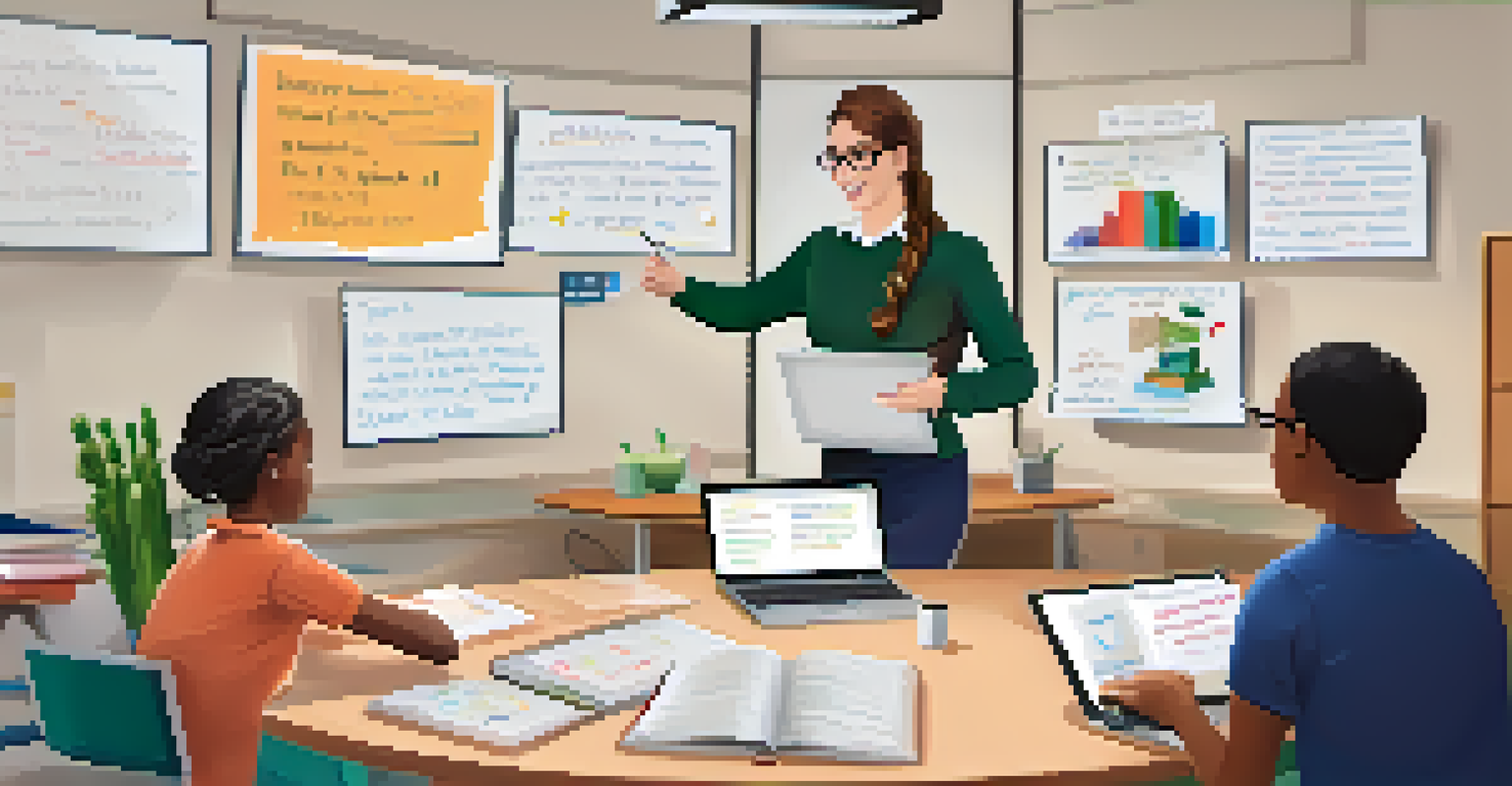Challenges and Opportunities of Remote Teaching for Educators

Understanding the Shift to Remote Teaching
The transition to remote teaching has redefined the educational landscape. Educators had to quickly adapt to new technologies and platforms, which can feel overwhelming. This shift emphasizes the importance of digital literacy, not just for students but for teachers as well. Embracing this change opens up possibilities for innovative teaching methods that can enhance learning experiences.
The best way to predict the future is to create it.
Many educators found themselves learning alongside their students, which fostered a unique sense of collaboration. This shared journey can create a more open learning environment where both teachers and students feel comfortable exploring new ideas. The change also encourages educators to rethink their teaching strategies, making lessons more interactive and engaging.
However, this sudden shift isn't without its hurdles. Teachers often face challenges such as limited access to resources, varying levels of student engagement, and balancing personal and professional demands. Acknowledging these obstacles is essential to finding effective solutions and creating a supportive remote teaching environment.
Challenges of Maintaining Student Engagement
One of the most significant challenges in remote teaching is maintaining student engagement. Without the physical presence of a classroom, some students may feel disconnected, leading to decreased participation. Teachers must find new ways to keep their lessons lively, such as incorporating multimedia elements and interactive activities.

To address this issue, educators can use tools like breakout rooms for small group discussions, polls, and quizzes to encourage interaction. These strategies not only help keep students engaged but also foster a sense of community among peers. It’s important to remember that engagement doesn't always mean participation; sometimes, it’s about creating an environment where students feel valued and heard.
Challenges of Remote Teaching
Teachers face obstacles like limited resources and varying student engagement while adapting to remote learning.
Additionally, teachers can benefit from regular feedback from their students. Understanding what works and what doesn’t can help refine teaching methods, making them more effective in a remote setting. Open communication channels, such as discussion forums or surveys, can provide insights into students' experiences and needs.
Overcoming Technological Barriers in Remote Teaching
Technology can be a double-edged sword in remote teaching. While it provides numerous tools for educators, it can also create barriers for those who are less tech-savvy or have limited access to reliable internet. Teachers often need to navigate different platforms, which can be time-consuming and frustrating at times.
Education is not the filling of a pail, but the lighting of a fire.
To overcome these barriers, professional development opportunities are crucial. Workshops that focus on digital tools can empower educators to feel more confident in their abilities. Additionally, schools and institutions can support teachers by providing resources, such as instructional videos or tech support, to ease the transition.
Moreover, fostering a culture of collaboration among teachers can be beneficial. Sharing best practices and troubleshooting tips can create a supportive community that enhances everyone's teaching experience. When educators come together to solve problems, they not only improve their own skills but also enrich their students' learning journeys.
Creating Inclusive Learning Environments Online
Inclusivity in remote teaching is vital to ensure all students feel supported and valued. Educators must consider the diverse needs of their students, including those with disabilities or language barriers. By implementing accessible resources and materials, teachers can create a more equitable learning environment.
Using tools like closed captioning for videos or providing transcripts can significantly aid students who may struggle with traditional formats. Additionally, offering assignments in multiple formats allows students to engage in ways that suit their learning styles. This flexibility not only promotes inclusivity but also encourages students to take ownership of their learning.
Importance of Student Engagement
Maintaining student engagement is crucial, requiring teachers to implement interactive activities and foster a sense of community.
Moreover, fostering a culture of respect and understanding is essential. Encouraging students to share their perspectives and experiences can enrich discussions and build a sense of community. When educators prioritize inclusivity, they create a space where all students can thrive, regardless of their backgrounds.
Balancing Work and Personal Life as an Educator
Remote teaching can blur the lines between work and personal life, leading to burnout among educators. The flexibility of teaching from home can sometimes translate into longer hours and increased stress. It's crucial for teachers to establish boundaries to protect their well-being.
Setting specific work hours and creating a dedicated workspace can help maintain a healthy balance. Additionally, incorporating self-care routines into daily schedules can make a big difference. Whether it's taking breaks to stretch or scheduling time for hobbies, prioritizing personal time is essential for sustaining energy and motivation.
Furthermore, educators should seek support from colleagues and administrators. Sharing experiences and strategies for maintaining balance can create a sense of camaraderie. When educators support each other in managing their workloads, they contribute to a healthier, more productive teaching environment.
The Role of Parental Involvement in Remote Learning
Parental involvement plays a crucial role in the success of remote learning. When parents are engaged, students are more likely to stay motivated and focused on their studies. Educators can foster this involvement by providing resources and guidance on how parents can support their children effectively.
Regular communication with parents is key to building strong partnerships. Weekly updates about lesson plans and expectations can help parents understand how to assist their children at home. Additionally, hosting virtual parent-teacher conferences can provide an opportunity for open dialogue and collaboration.
Role of Parental Involvement
Active parental involvement enhances remote learning success, as it helps motivate students and creates a supportive learning environment.
Moreover, educators can encourage parents to create a conducive learning environment at home. Simple changes, such as establishing a designated study area or setting a routine, can greatly impact a student's ability to focus. When teachers and parents work together, they create a support system that enhances the remote learning experience.
Embracing Opportunities for Professional Growth
While remote teaching presents challenges, it also offers numerous opportunities for professional growth. Educators have the chance to explore new technologies and teaching methodologies that they may not have considered before. This exploration can lead to innovative practices that enhance student learning.
Participating in online courses and webinars can expand teachers' skill sets and keep them informed about the latest trends in education. Networking with other professionals in virtual spaces can also lead to collaborative projects and shared resources. Embracing these opportunities can lead to personal and professional development.

Furthermore, reflecting on teaching practices can help educators identify areas for improvement. Keeping a teaching journal or participating in peer reviews can provide valuable insights into one’s teaching style. By viewing remote teaching as a chance for growth, educators can turn challenges into stepping stones for success.